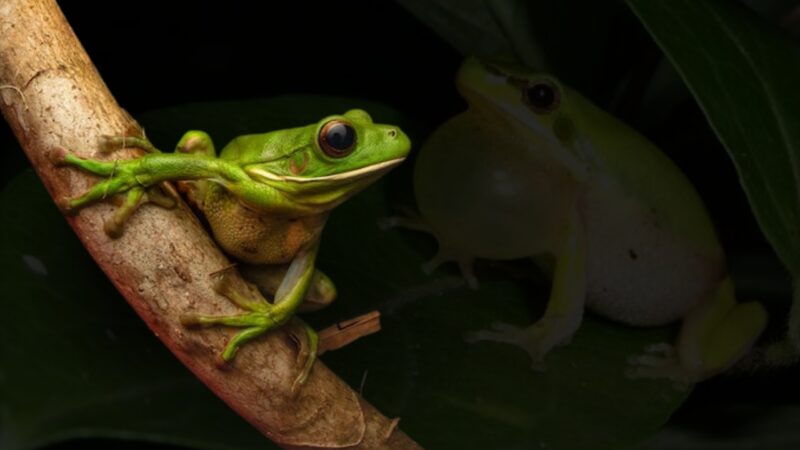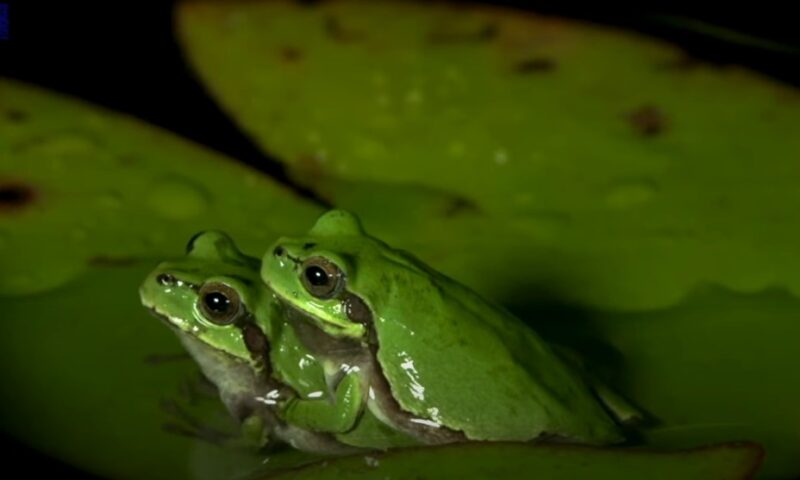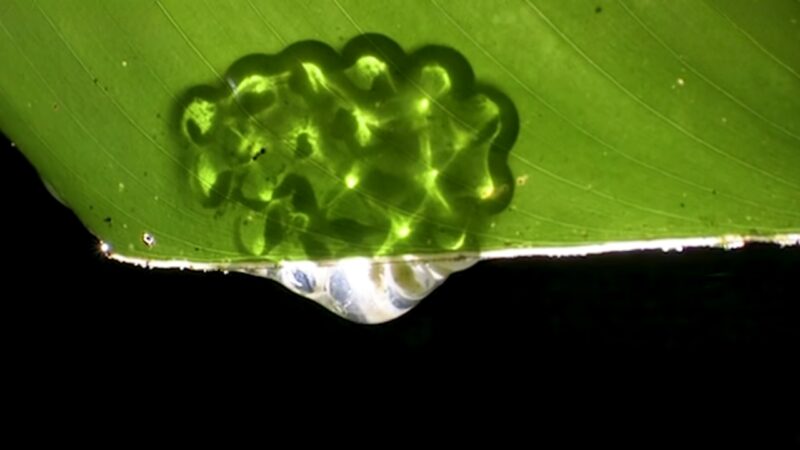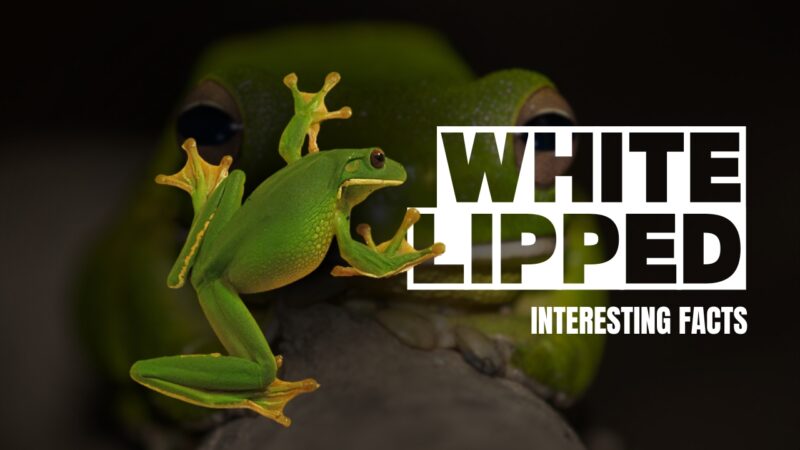Welcome to a mesmerizing expedition through the heart of vibrant Southeast Asian rainforests, where the enchanting White-Lipped Tree Frog (Litoria infrafrenata) reigns as a true marvel of nature. Prepare to be captivated as we embark on a journey filled with striking pictures, enthralling videos, and captivating facts about this majestic amphibian.
Join us as we venture into the mystical canopy, where emerald green meets the ethereal white lip, and discover the secrets that make the White-Lipped Tree Frog an extraordinary ambassador of biodiversity. Get ready to be swept away by the charm and allure of this magnificent creature that holds the key to the rainforest’s hidden wonders!
Overview of the White-Lipped Tree Frog
The White-Lipped Tree Frog, also known as the Giant Tree Frog, is a striking amphibian species found in the rainforests of Papua New Guinea, Indonesia, and Australia’s northeastern regions. With its vibrant green coloration and distinct white upper lip, it has become an iconic representative of the biodiversity found in these diverse ecosystems.
Physical Characteristics:
The White-Lipped Tree Frog boasts an elegant yet robust appearance. It typically measures around 4 to 5 inches (10 to 13 centimeters) in length, making it one of the largest tree frog species globally. Its large, expressive eyes provide excellent night vision, essential for navigating the dimly lit rainforest canopies.
Habitat and Distribution:
This remarkable species thrives in the canopy of tropical rainforests, where high humidity and ample vegetation offer the perfect environment for their survival. Their distribution spans a range of regions within Southeast Asia, showcasing the species’ adaptability to varying habitats.
Behavior and Adaptations
The White-Lipped Tree Frog has evolved numerous fascinating behaviors and adaptations to thrive in its rainforest habitat.
Arboreal Lifestyle:
As arboreal creatures, White-Lipped Tree Frogs are perfectly adapted for life among the treetops. Their large, adhesive toe pads enable them to cling to leaves and branches effortlessly. This adaptation grants them access to a wide array of prey, such as insects, spiders, and smaller frogs.
Camouflage Techniques:
Camouflage is a crucial survival skill for these tree-dwelling amphibians. Their vibrant green coloration, coupled with their ability to remain motionless for extended periods, helps them blend seamlessly with the foliage, effectively avoiding predators.
Vocalizations and Communication:
Male White-Lipped Tree Frogs are particularly vocal during the breeding season. Their distinct calls echo through the rainforest, serving both as a mating call to attract females and a territorial signal to other males.
Lifecycle and Reproduction
The breeding behavior of the White-Lipped Tree Frog is an extraordinary spectacle that unfolds with precision and synchrony during the rainy season. As the clouds gather and the rainforest comes alive with moisture, these majestic amphibians seize the opportunity to embark on their mesmerizing mating rituals.
Mating Calls:
The symphony begins with the male White-Lipped Tree Frogs transforming the rainforest into an enchanting amphitheater. Their characteristic mating calls, resonating like melodious chimes through the verdant canopy, serve as a declaration of virility and territorial ownership.
Each male’s call has a distinct pitch and rhythm, acting as a unique identifier among a chorus of suitors. This sonorous serenade not only attracts potential mates but also helps establish hierarchies, reducing the likelihood of unnecessary confrontations among males vying for the same females.
Courtship Rituals:

Once a female is lured by the call of a particularly captivating male, a delicate dance of courtship commences. The male frog, eager to demonstrate his fitness as a mate, exhibits an intricate display of movements and postures.
He puffs up his throat, revealing the striking contrast between his bright white lips and vibrant green body, while also swaying gently to captivate his potential mate. These mesmerizing displays aim to impress the female and convince her of his suitability as a breeding partner.
Egg Fertilization:
Upon successfully wooing a female, the male approaches her cautiously, and they engage in a close embrace. In a remarkable feat of adaptation, the male externally fertilizes the eggs as the female lays them.
This process is known as amplexus, where the male clasps the female tightly from behind, ensuring that his sperm fertilizes the eggs as they are released. The synchronized act of egg-laying and fertilization helps increase the chances of successful reproduction.
Egg Deposition:

Following fertilization, the female White-Lipped Tree Frog takes great care in choosing the perfect location for her offspring. She selects large, smooth leaves that hang above still or slow-moving water sources, such as ponds or rain-filled tree cavities.
This strategic decision safeguards the developing tadpoles from potential predators while providing them with the necessary moisture and protection during their early stages of life.
Tadpole Development:
As the eggs hatch into tadpoles, they eventually drop from the leaf into the water below. Here begins a new chapter in the lifecycle of these remarkable creatures. The tadpoles undergo a miraculous metamorphosis over several weeks, transforming from aquatic larvae into fully formed froglets, equipped to embark on their arboreal journey into the rainforest canopy.
| Year | Estimated Population (in thousands) |
|---|---|
| 2000 | 75 |
| 2005 | 62 |
| 2010 | 50 |
| 2015 | 42 |
| 2020 | 36 |
Ecological Importance and Conservation
Beyond their stunning appearance and fascinating behaviors, the White-Lipped Tree Frog plays a vital role in maintaining the delicate balance of its rainforest ecosystem. Let’s explore their ecological significance and the challenges they face in the realm of conservation.
Natural Pest Control:
In the bustling rainforest, the White-Lipped Tree Frog becomes an agile predator, safeguarding the delicate ecological equilibrium by keeping insect populations in check.
With an insatiable appetite for a wide array of insects, including mosquitoes, beetles, and moths, these voracious insectivores are nature’s very own pest controllers. Their relentless hunt for creepy-crawlies helps prevent pest outbreaks that could otherwise disrupt the intricate web of life within the rainforest.
Indicator Species:

Like guardians of the forest, White-Lipped Tree Frogs serve as vital sentinels, signaling the overall health of their habitat. Their sensitivity to environmental changes, such as fluctuations in temperature and humidity, makes them exceptional indicator species.
Declines in their population or health can indicate shifts in the ecosystem’s well-being, alerting researchers to potential threats or imbalances in the rainforest environment. By monitoring the well-being of these exquisite amphibians, scientists can gain valuable insights into the overall state of biodiversity in the region.
Conservation Challenges:
Despite their vital ecological roles, White-Lipped Tree Frogs face an uncertain future, grappling with an array of challenges that threaten their very existence. The most pressing concern is habitat destruction, as large swathes of rainforest continue to be cleared for human activities, such as logging and agriculture. This loss of habitat severely impacts their ability to find suitable breeding and feeding grounds, leading to population decline.
Additionally, climate change poses a significant threat to these sensitive creatures. As temperatures rise and rainfall patterns shift, the delicate balance that sustains the rainforest ecosystem is disrupted, affecting not only the frogs but the entire biodiversity web.
Furthermore, infectious diseases, like the notorious chytrid fungus, have emerged as formidable adversaries for amphibian populations worldwide, including the White-Lipped Tree Frog. This deadly pathogen can devastate entire populations, leaving ecosystems with critical gaps in their ecological structure.
Conclusion
The White-Lipped Tree Frog’s enchanting appearance, unique adaptations, and pivotal ecological role make it an invaluable subject of study and appreciation. Through pictures, videos, and interesting facts, we have embarked on an educational journey, discovering the beauty and wonder of this captivating amphibian species.
By understanding their behavior, lifecycle, and importance in the rainforest ecosystem, we gain insights into the significance of protecting these delicate habitats and the creatures that call them home. Let us embrace the responsibility of conservation and celebrate the extraordinary diversity of life that the White-Lipped Tree Frog symbolizes.
Related Posts:
- 17 Ugliest Fish in the World - Pics, Videos,…
- African Animals - Interesting Facts and Pictures
- 50 Animals That Start With N: Pictures & Interesting Facts
- 15 Ugliest Animals in The World - Pictures,…
- What Does Frog Poop Look Like? - Analyzing the Appearance
- Animals that Start with X – Pictures & Fun Facts -…








